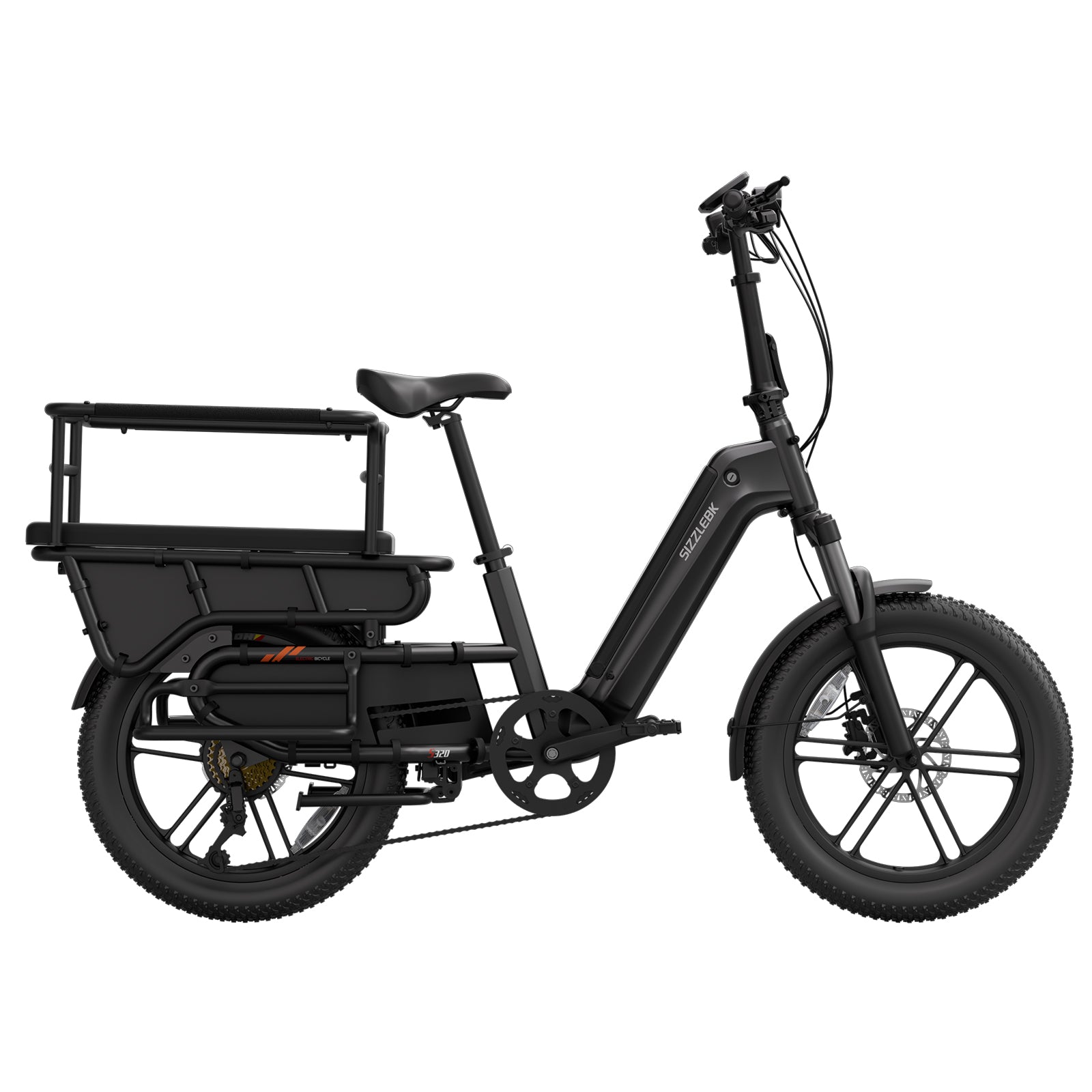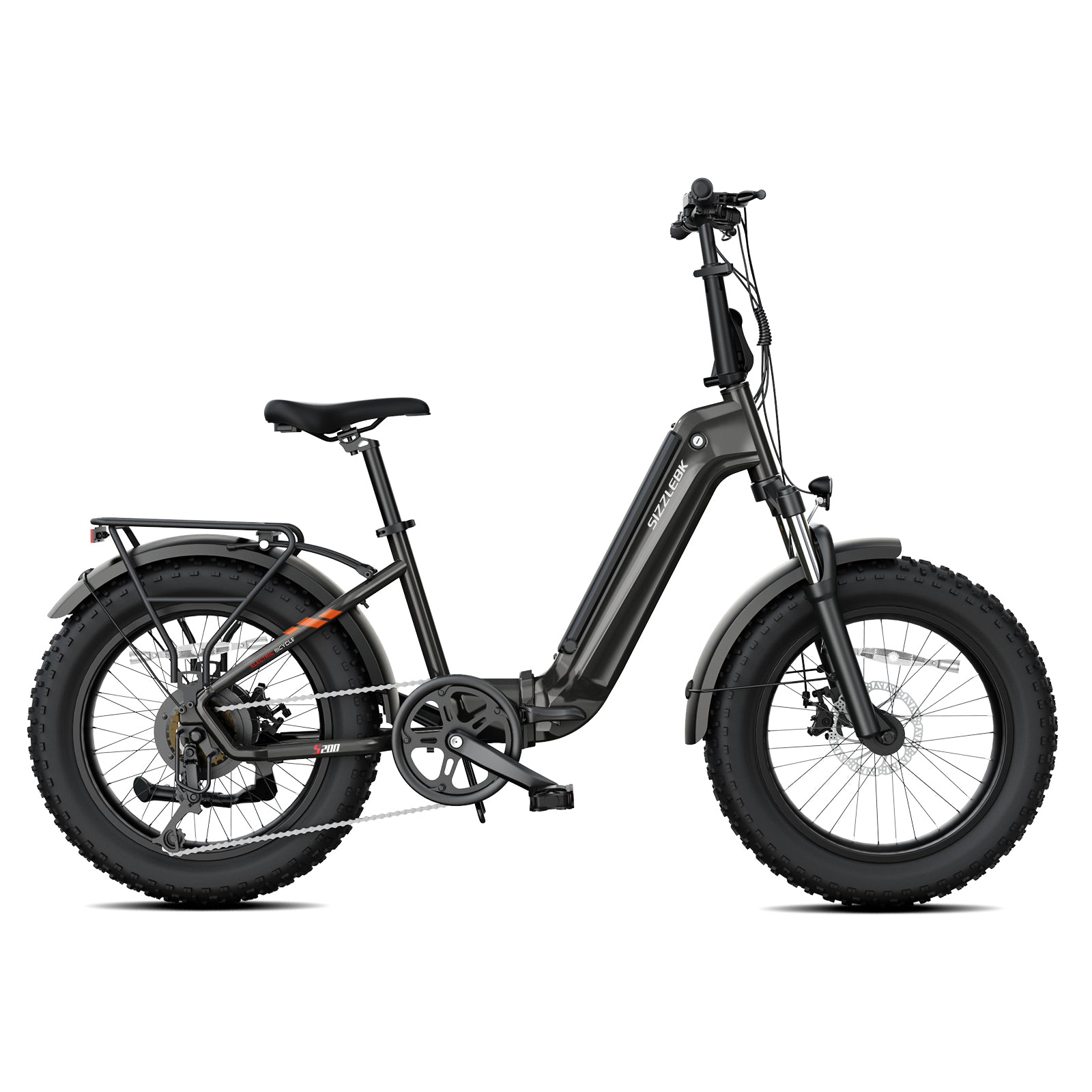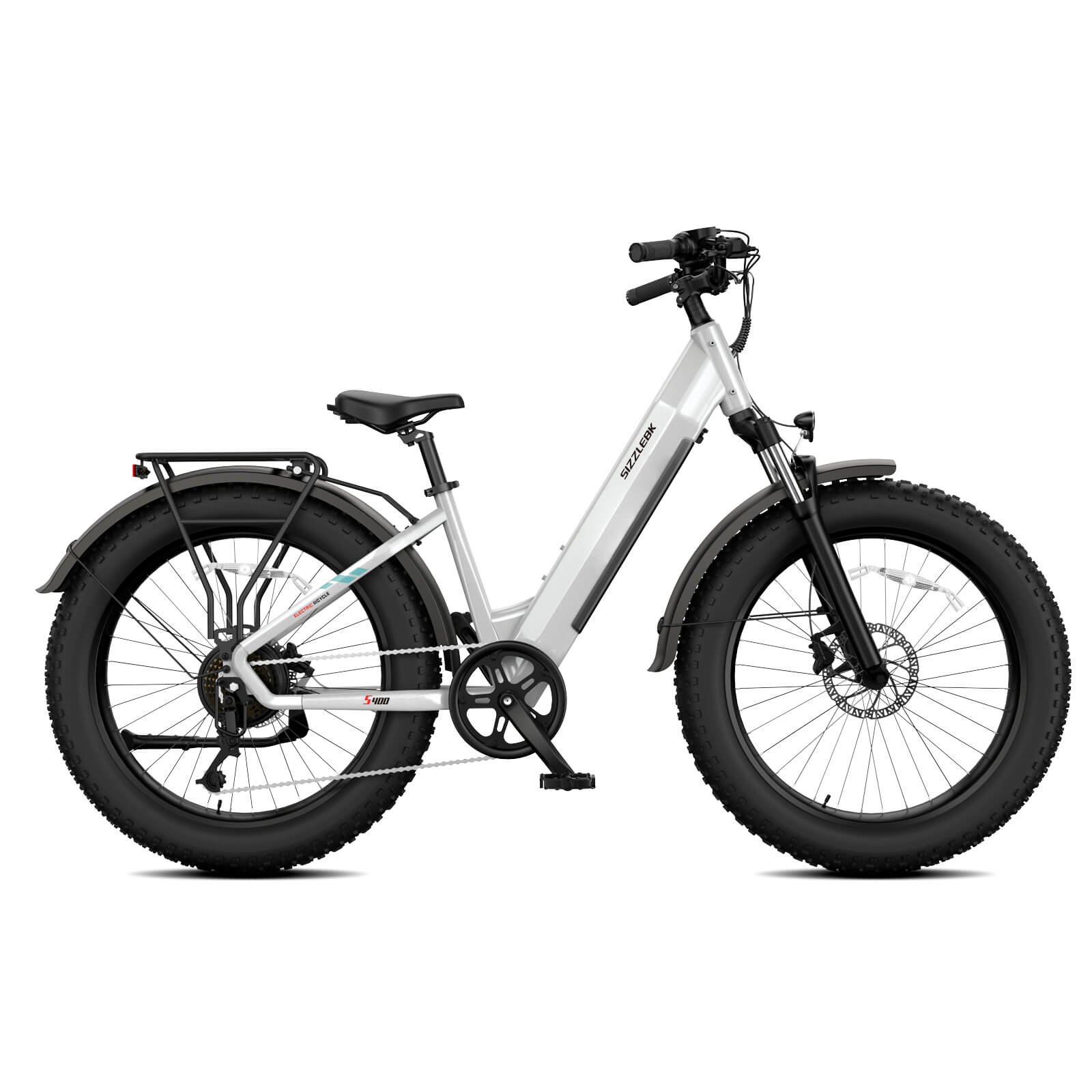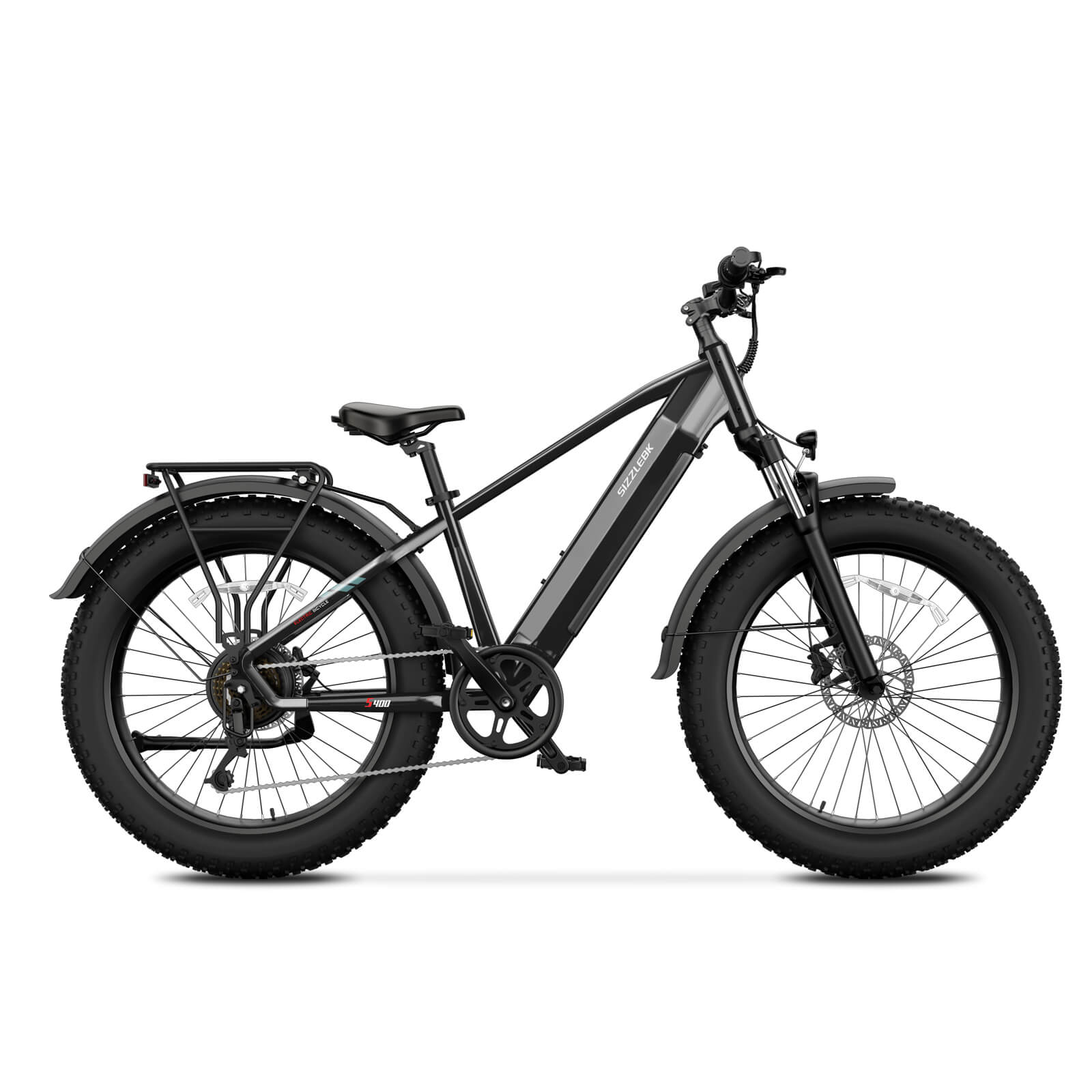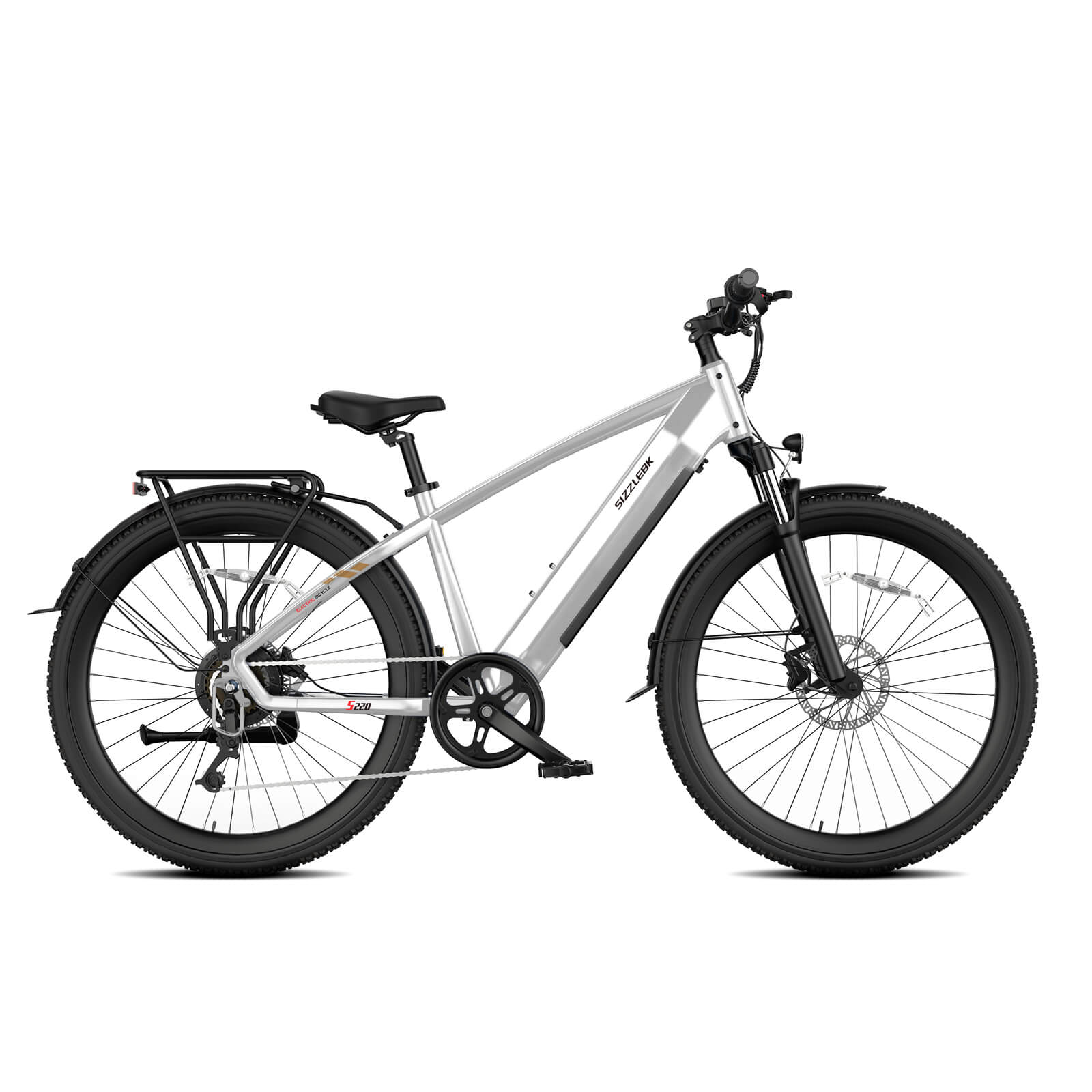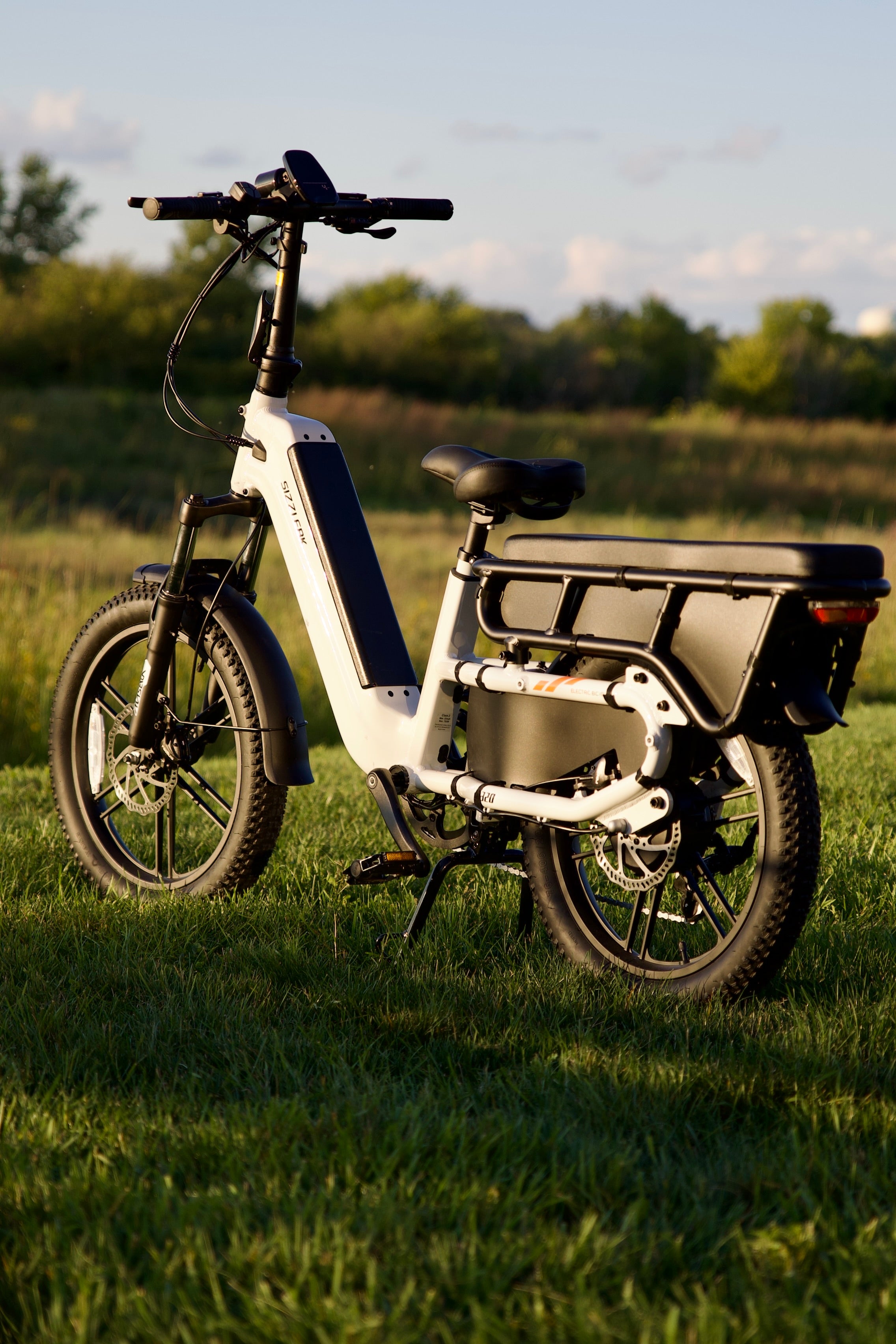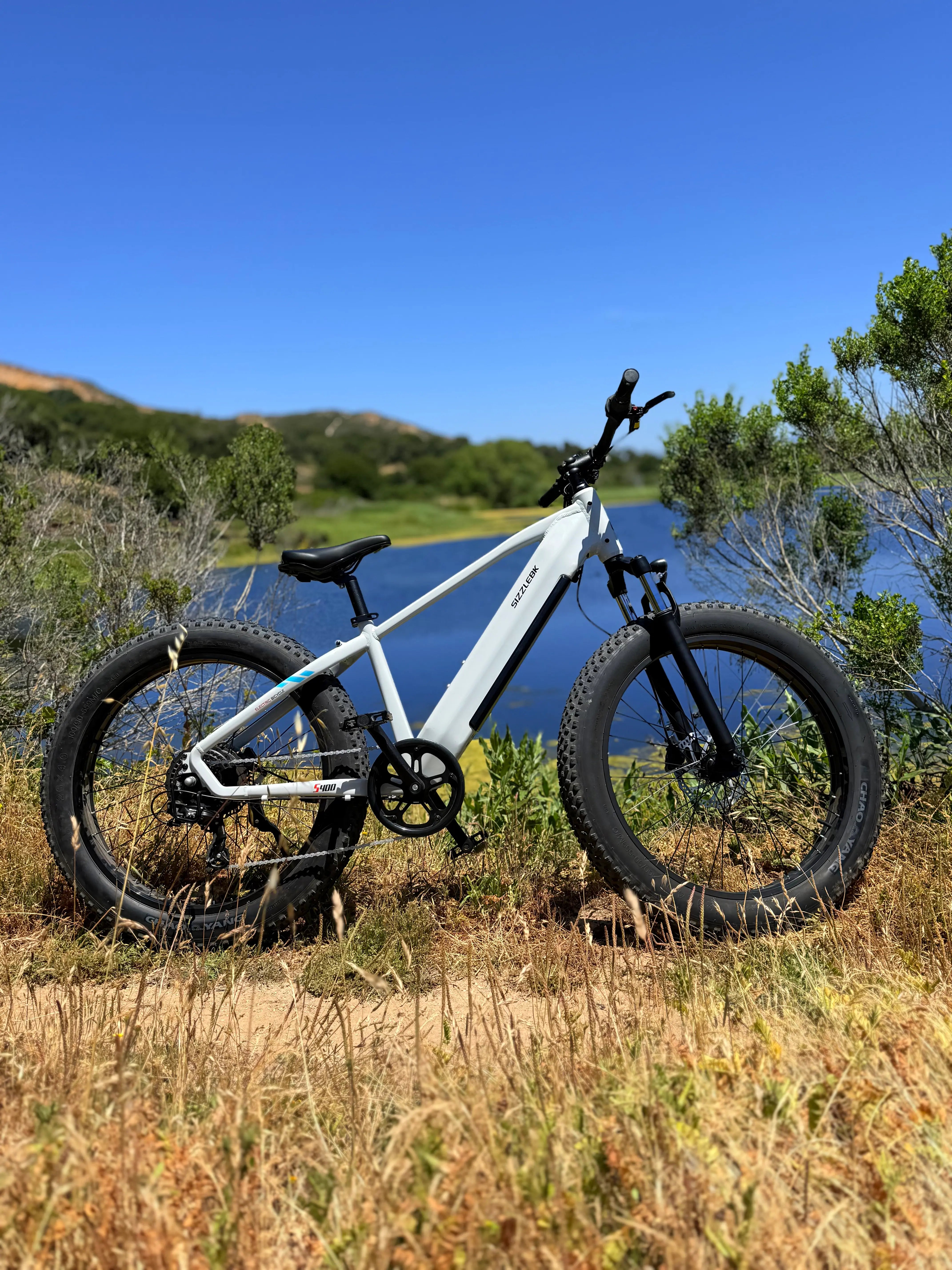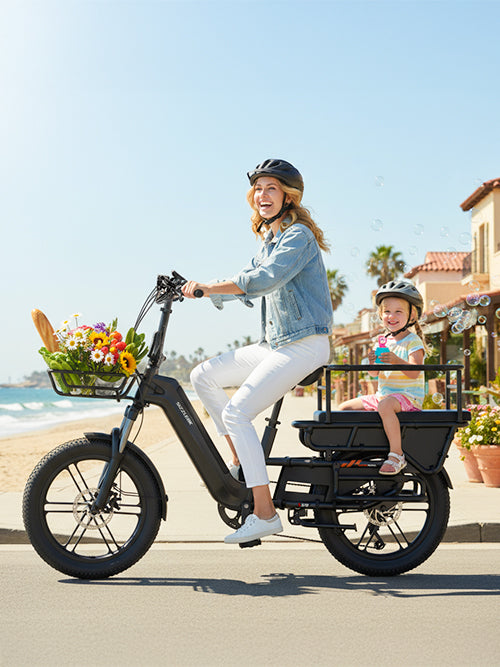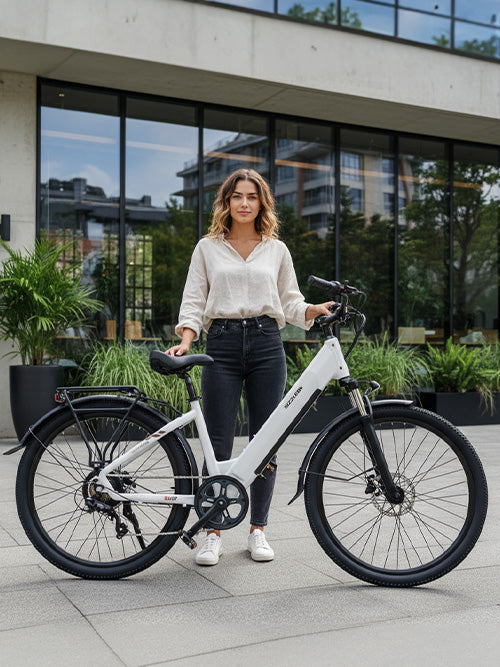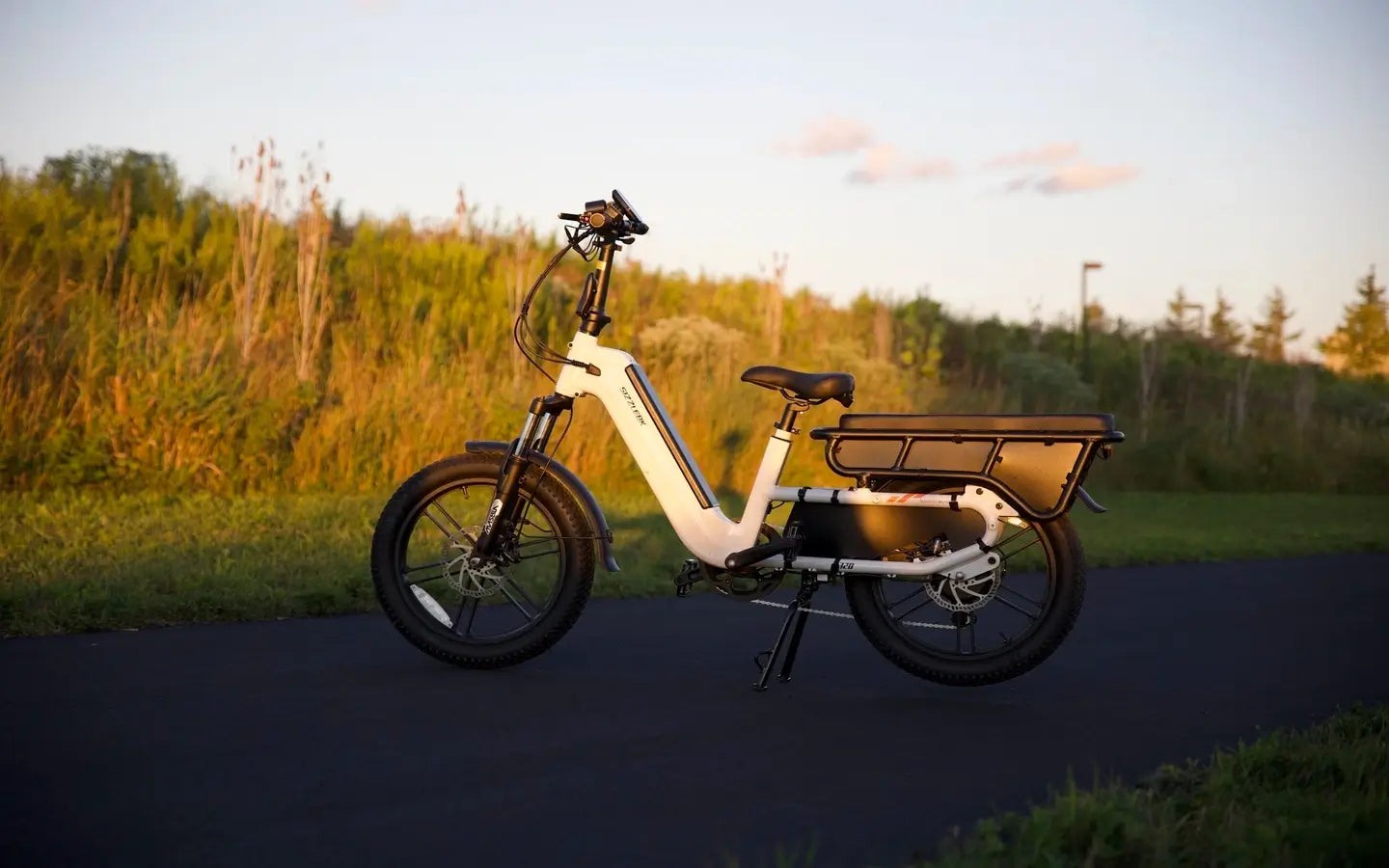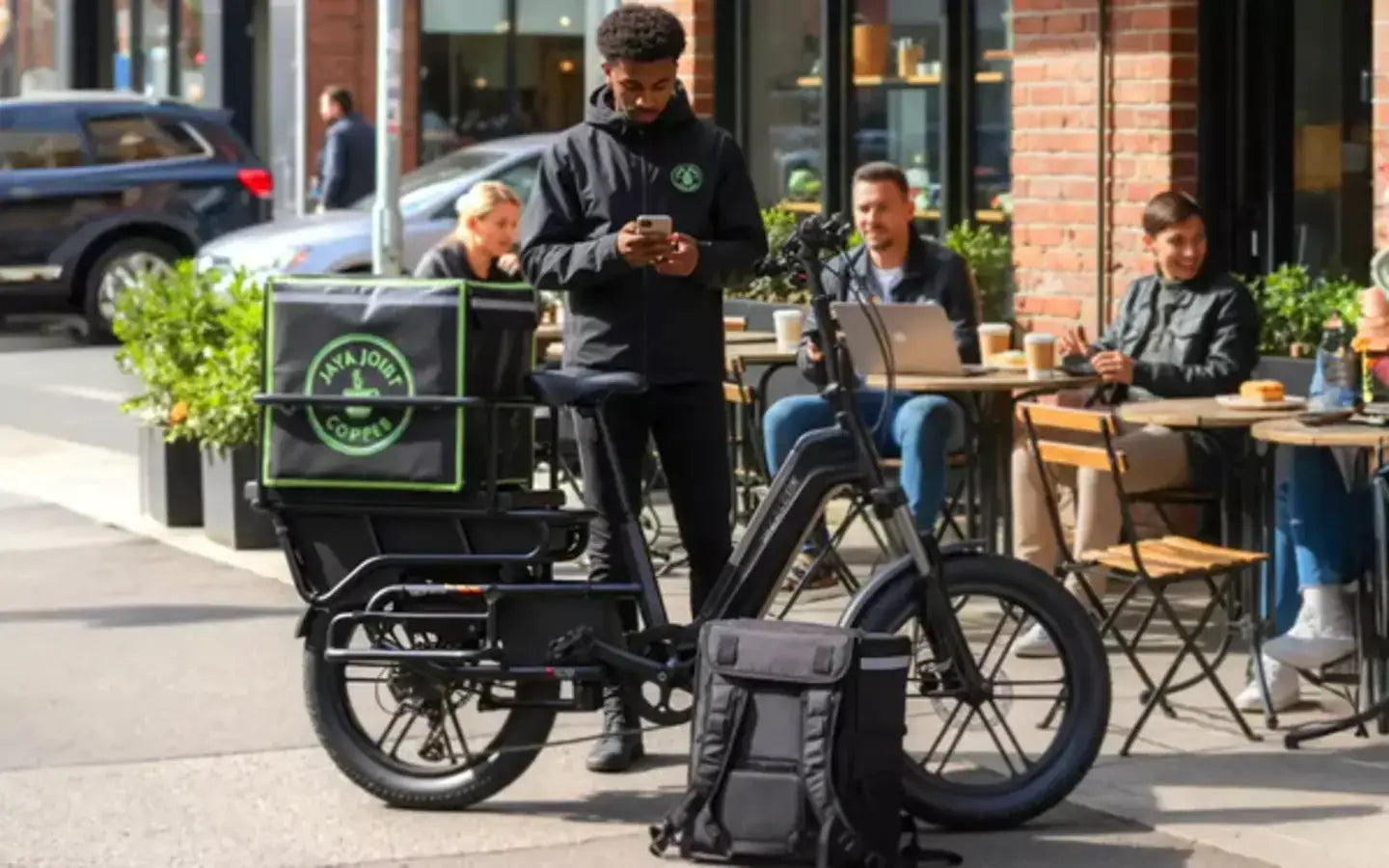eCargo bikes, or electric cargo bikes, are bicycles equipped with an electric motor to assist with pedaling, making it easier to transport goods. They come in various shapes and sizes, often featuring a robust frame, larger wheels, and cargo space either at the front or back. This design allows them to handle significant loads, making them ideal for delivery services.
There are several types of eCargo bikes, each suited for different needs:
- Two-Wheelers: These resemble regular bicycles but with an extended frame to accommodate cargo. They are generally more agile and can navigate tighter spaces, making them ideal for urban areas.
- Three-Wheelers (Trikes): These offer more stability due to their three-wheel design. Their larger cargo space is perfect for heavier loads, and they are often used in logistics where balance and space are crucial.
- Longtails: With an extended rear rack, these bikes are designed for carrying heavier loads or additional passengers. They are versatile and can be adapted for various cargo types, making them a popular choice among families and small businesses.
eCargo bikes are not just about carrying goods; they incorporate numerous features and innovations to enhance usability and comfort:
- Electric Assistance: The electric motor provides a significant boost, allowing riders to tackle inclines and longer distances without excessive effort. This is particularly beneficial in hilly areas or for delivery routes that cover large distances.
- Customizable Cargo Space: Many eCargo bikes offer modular cargo solutions, allowing businesses to customize the bike according to their specific needs. Options include insulated boxes for food delivery or secure containers for valuable items.
- Safety Enhancements: Modern eCargo bikes come equipped with advanced safety features like LED lights, reflective strips, and hydraulic disc brakes. These features ensure that the bikes are visible and safe to operate in urban traffic.
The versatility of eCargo bikes makes them suitable for a wide range of markets:
- Urban Deliveries: Ideal for businesses operating in congested city centers, where traditional delivery vehicles may struggle.
- Local Businesses: Perfect for local shops and restaurants looking to offer delivery services without the overhead of a traditional delivery vehicle.
- Family Use: Increasingly popular among families for school runs and grocery shopping, offering a practical and eco-friendly transport solution.
One of the most significant advantages of eCargo bikes is their environmental impact. Unlike traditional delivery vehicles, eCargo bikes produce zero emissions while in use. This makes them an eco-friendly option for companies looking to reduce their carbon footprint.
Vehicles powered by fossil fuels are major contributors to air pollution in urban areas. By using eCargo bikes, companies can help decrease the pollution levels in cities, contributing to cleaner air and healthier communities.
- Zero Emissions: eCargo bikes run on electric power, meaning they produce no emissions during operation. This directly reduces the amount of harmful pollutants released into the atmosphere.
- Improving Urban Air Quality: As more businesses switch to eCargo bikes, the cumulative effect can lead to significant improvements in urban air quality, benefiting public health and reducing healthcare costs associated with pollution-related illnesses.
- Supporting Sustainability Goals: Companies using eCargo bikes can align with global and local sustainability goals, enhancing their brand reputation and appeal among environmentally-conscious consumers.
The production and operation of eCargo bikes generate far less carbon dioxide compared to conventional delivery trucks. This means that businesses can significantly lower their carbon footprint, aligning with global efforts to combat climate change.
- Reduced Energy Consumption: eCargo bikes require significantly less energy to operate compared to motor vehicles. The electric motor is highly efficient, reducing the overall energy consumption.
- Sustainable Manufacturing Practices: Many eCargo bike manufacturers are adopting sustainable practices, using eco-friendly materials and processes to further reduce environmental impact.
- Long-Term Environmental Impact: Over time, the widespread adoption of eCargo bikes can lead to substantial reductions in carbon emissions, helping to mitigate the effects of climate change.
eCargo bikes can be powered by renewable energy sources, further enhancing their environmental benefits:
- Solar Charging Stations: Some companies are investing in solar-powered charging stations for eCargo bikes, ensuring that the energy used is clean and sustainable.
- Battery Recycling Programs: As part of their commitment to sustainability, many eCargo bike providers offer battery recycling programs to minimize waste and promote the responsible disposal of used batteries.
- Integration with Green Energy Grids: In regions with green energy grids, eCargo bikes can be charged using renewable energy sources, reducing reliance on fossil fuels.
Aside from their environmental advantages, eCargo bikes offer considerable economic benefits for businesses.
Operating an eCargo bike is much cheaper than running a gas-powered delivery vehicle. The cost savings come from lower fuel expenses, reduced maintenance costs, and the absence of road tax in many regions.
- Lower Operational Costs: eCargo bikes have minimal fuel costs since they run on electricity, which is cheaper than gasoline or diesel. Additionally, they have fewer mechanical parts, reducing the need for frequent maintenance.
- Tax Incentives and Subsidies: Many governments offer tax incentives and subsidies for businesses that adopt eco-friendly transportation solutions like eCargo bikes, further reducing the financial burden.
- Reduced Insurance Premiums: Insurance for eCargo bikes is often less expensive than for traditional vehicles, offering another financial advantage for businesses.
In densely populated urban areas, traffic congestion is a major issue. eCargo bikes can navigate through narrow streets and bike lanes, often reaching destinations faster than trucks. This efficiency can improve delivery times and customer satisfaction.
- Bypassing Traffic Jams: eCargo bikes can use bike lanes and paths not accessible to motor vehicles, allowing them to bypass traffic jams and deliver goods faster.
- Flexible Route Planning: The agility of eCargo bikes allows for flexible route planning, enabling businesses to optimize delivery routes and reduce delivery times.
- Enhanced Customer Experience: Faster delivery times and reliability enhance the customer experience, leading to higher satisfaction and repeat business.
eCargo bikes require less infrastructure compared to traditional delivery vehicles. There's no need for large parking spaces or loading docks, which can be a significant advantage in crowded city centers.
- Reduced Need for Parking Spaces: eCargo bikes can be parked in small spaces, reducing the need for extensive parking infrastructure.
- Easier Access to Delivery Locations: The compact size of eCargo bikes allows them to access delivery locations that might be challenging for larger vehicles, such as pedestrian zones or narrow alleys.
- Lower Infrastructure Maintenance Costs: With less wear and tear on roads and bridges, the use of eCargo bikes can contribute to reduced public infrastructure maintenance costs.
The rise of eCargo bikes is not only good for the environment and businesses but also brings social benefits.
Riding an eCargo bike promotes a healthier lifestyle for delivery personnel. Unlike sitting in a truck for extended periods, cycling helps improve cardiovascular health and overall fitness.
- Physical Activity: Cycling provides an excellent form of exercise, helping delivery personnel stay active and maintain a healthy weight.
- Mental Health Benefits: Regular physical activity, such as cycling, can reduce stress and anxiety, contributing to improved mental well-being for delivery workers.
- Work-Life Balance: eCargo bikes offer a more enjoyable and engaging work experience, potentially leading to higher job satisfaction and better work-life balance.
As the demand for eCargo bikes increases, so does the need for skilled workers to assemble, maintain, and operate these vehicles. This creates new job opportunities in the sustainable transport sector.
- Manufacturing Jobs: The growing eCargo bike industry creates jobs in manufacturing, offering new career opportunities in green technology sectors.
- Maintenance and Repair Services: With more eCargo bikes on the road, there is an increased need for skilled technicians to maintain and repair these vehicles.
- Delivery Roles: The expansion of eCargo bike delivery services generates employment opportunities for delivery personnel, supporting local economies and providing stable jobs.
eCargo bikes encourage interaction between delivery personnel and the communities they serve. This can foster a sense of community and improve the reputation of businesses that prioritize sustainable transport solutions.
- Building Community Ties: Delivery personnel using eCargo bikes often have more opportunities to interact with customers and the local community, fostering positive relationships.
- Supporting Local Businesses: By using eCargo bikes, businesses can enhance their local presence and demonstrate their commitment to sustainable practices, boosting their community reputation.
- Encouraging Sustainable Practices: The visibility of eCargo bikes in communities can inspire others to consider more sustainable transportation options, promoting a broader cultural shift toward environmental responsibility.
While eCargo bikes offer numerous benefits, there are also challenges that need to be considered.
eCargo bikes have a weight limit, which means they are not suitable for all types of deliveries. Businesses need to assess their delivery needs to determine if eCargo bikes are a viable option.
- Assessing Delivery Needs: Companies must evaluate the types and weights of goods they typically deliver to ensure eCargo bikes can accommodate their needs.
- Supplementing with Other Vehicles: For larger or heavier deliveries, businesses may need to supplement eCargo bikes with traditional vehicles, ensuring a comprehensive delivery solution.
- Optimizing Load Capacity: Businesses can optimize the load capacity of eCargo bikes by carefully planning delivery routes and schedules, maximizing efficiency.
Inclement weather can pose a challenge for eCargo bike deliveries. Rain, snow, and extreme temperatures can affect the performance and safety of these bikes.
- Weather Adaptation Strategies: Companies can implement strategies such as equipping bikes with weather-resistant materials and providing appropriate gear for riders to mitigate weather-related challenges.
- Seasonal Planning: Businesses may need to adjust delivery schedules and routes during adverse weather conditions, ensuring safety and reliability.
- Developing Contingency Plans: Having contingency plans in place for extreme weather events can help businesses maintain continuity and service quality.
The initial cost of purchasing eCargo bikes can be high. However, the long-term savings and benefits often outweigh the initial investment.
- Evaluating Return on Investment: Businesses should conduct a thorough cost-benefit analysis to understand the long-term financial benefits of investing in eCargo bikes.
- Exploring Financing Options: There are various financing options available, such as leasing or government grants, that can help offset initial costs.
- Long-Term Cost Savings: Despite the upfront investment, the reduced operational costs and potential for increased efficiency can lead to significant long-term savings.
Many companies worldwide are already reaping the benefits of eCargo bikes. For example, UPS has implemented eCargo bikes in various cities to complement their delivery fleet. This has resulted in reduced emissions and improved delivery efficiency.
UPS has been a pioneer in integrating eCargo bikes into their delivery operations, particularly in densely populated urban areas. By using eCargo bikes, they have been able to reduce their carbon footprint and navigate congested streets more effectively.
- Operational Efficiency: The use of eCargo bikes has allowed UPS to maintain high delivery efficiency while reducing reliance on traditional vehicles.
- Environmental Impact: By cutting down on emissions, UPS has demonstrated its commitment to sustainability and corporate responsibility.
- Community Response: The initiative has been well-received by communities, enhancing UPS's brand image as a leader in green logistics.
In Europe, DHL Express has adopted eCargo bikes for last-mile deliveries in several cities, significantly lowering their carbon emissions and enhancing their sustainable transport initiatives.
- Last-Mile Solutions: eCargo bikes have proven to be an effective solution for last-mile deliveries, often the most challenging and costly segment of logistics.
- Sustainability Goals: The adoption of eCargo bikes aligns with DHL's broader sustainability goals, showcasing their dedication to reducing environmental impact.
- Business Benefits: The initiative has not only improved environmental performance but also enhanced operational efficiency and customer satisfaction.
Several other companies have embraced eCargo bikes as part of their delivery strategies, including local businesses and major retailers:
- Local Grocery Chains: Many local grocery stores have started using eCargo bikes to deliver fresh produce, offering a sustainable alternative to traditional delivery methods.
- Retail Giants: Some large retailers are piloting eCargo bike programs to assess their viability for urban deliveries, potentially setting a precedent for the industry.
- Independent Couriers: Independent couriers and delivery services are increasingly adopting eCargo bikes, capitalizing on their efficiency and eco-friendliness.
eCargo bikes are transforming the delivery industry by offering a sustainable, cost-effective, and efficient alternative to traditional delivery vehicles. They present a viable solution for businesses looking to reduce their environmental impact, save money, and contribute positively to their communities. As cities continue to grow and environmental concerns rise, the adoption of eCargo bikes is likely to increase, paving the way for a cleaner, more sustainable future in urban transport.
For businesses considering this shift, the benefits are clear. The initial investment in eCargo bikes can lead to long-term savings, improved brand image, and a substantial reduction in environmental impact.
- Competitive Edge: Businesses adopting eCargo bikes can gain a competitive edge by positioning themselves as leaders in sustainability and innovation.
- Enhanced Brand Reputation: Companies that prioritize sustainability can enhance their brand reputation, attracting environmentally-conscious consumers and partners.
- Adaptation to Urban Challenges: As urban areas become more congested, eCargo bikes offer a practical solution to navigating these challenges, ensuring timely and efficient deliveries.
The future of eCargo bikes looks promising, with technological advancements and growing awareness of sustainability driving their adoption:
- Innovations in Design: Ongoing innovations in eCargo bike design and technology will likely improve their performance and expand their applications.
- Policy Support: Increased policy support and investment in cycling infrastructure can further accelerate the adoption of eCargo bikes.
- Global Impact: As more cities worldwide embrace sustainable transport solutions, eCargo bikes are poised to play a crucial role in reducing urban congestion and pollution.
By embracing this innovative mode of transportation, businesses can stay competitive in a rapidly evolving marketplace, contributing to a more sustainable future for urban mobility.
